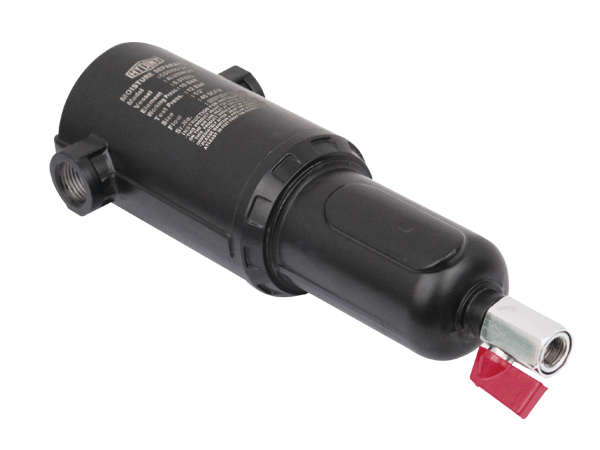Moisture separation is an essential aspect of any compressed air system. When air is compressed, the temperature of the air rises, causing the moisture in the air to condense into liquid form. This liquid can cause damage to the compressed air system by corroding pipes, valves, and other components. Additionally, it can negatively affect the performance of tools and equipment that use compressed air. Moisture separation can be accomplished through the use of a moisture separator, which is designed to remove moisture from the compressed air.
What is a Moisture Separator?
The purpose of a moisture separator is to remove moisture from compressed air. It works by separating the moisture from the air as it passes through the device. There are various types of moisture separators, and they are designed to be used in different applications. Some of the most common types of moisture separators include centrifugal, coalescing, and refrigeration.
How Does a Moisture Separator Work?
The working principle of a moisture separator is relatively simple. Compressed air is directed into the separator, where it passes through a series of filters and baffles. These filters and baffles are designed to slow down the flow of air, allowing the moisture to separate from the air and fall into a collection chamber at the bottom of the separator. The dry air then passes through the separator and into the compressed air system.
Importance of Using a Moisture Separator in Your Compressed Air System
Using a moisture separator in your compressed air system is essential for several reasons. First and foremost, it helps to prevent damage to the system by removing moisture that can cause corrosion and other types of damage. It also helps to ensure that the compressed air is clean and dry, which is essential for many applications.
For example, if you are using compressed air to paint a surface, any moisture in the air can cause the paint to not adhere properly, resulting in a subpar finish. Additionally, moisture in the compressed air can cause damage to pneumatic tools and equipment, resulting in costly repairs or replacements.
Types of Moisture Separators and Which One to Choose
There are several types of moisture separators available, each with its unique advantages and disadvantages. The most common types of moisture separators include:
Centrifugal separators: These separators use centrifugal force to separate moisture from the compressed air. They are generally best suited for applications that require low moisture levels and can handle high flow rates.
Coalescing separators: Coalescing separators use filters to remove moisture from the compressed air. They are best suited for applications that require extremely low moisture levels and can handle lower flow rates.
Refrigerated separators: These separators use refrigeration to cool the compressed air, causing the moisture to condense and separate from the air. They are best suited for applications that require very low moisture levels and can handle moderate flow rates.
When choosing a moisture separator, it is important to consider factors such as the flow rate of the compressed air, the required moisture level, and the specific application. It is also important to ensure that the separator is properly maintained to ensure optimal performance and longevity.
In conclusion, moisture separators play a critical role in ensuring that compressed air systems operate effectively and efficiently. By removing moisture from the compressed air, they help to prevent damage to the system and ensure that the air is clean and dry, which is essential and can improve the performance and lifespan of tools and equipment that use compressed air. When choosing a moisture separator, it is important to select the right type based on your specific needs and to properly maintain it to ensure optimal performance. With the proper use of a moisture separator, you can ensure that your compressed air system operates smoothly and effectively and that your tools and equipment remain in top condition.


